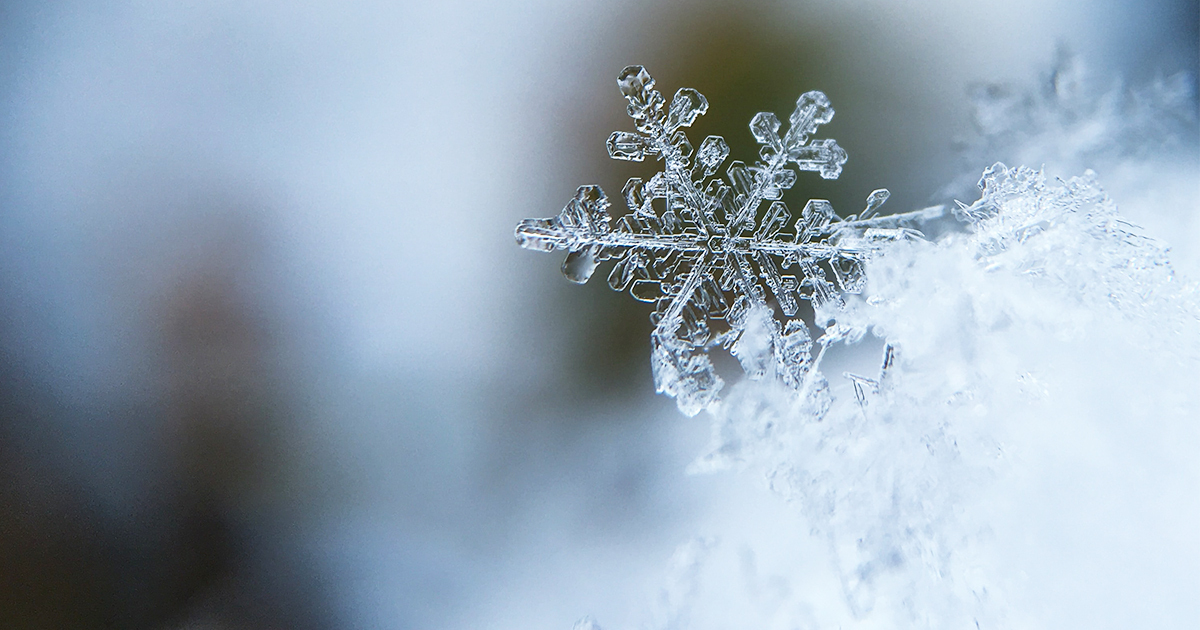A Clarinetists Guide to "Winterize"
by Mitchell Estrin
Date Posted: October 01, 2020

Photo by Aaron Burden
How to Prepare Your Instrument for the Winter
What should a clarinetist do to prepare for colder weather? Get clarinet snow tires, an ice scraper, and check the anti-freeze? All kidding aside, with the colder months approaching, it is time for clarinetists to winterize. This includes preparing and protecting your instrument, reeds, and yourself from the harsh elements of winter.
First, let’s address caring for your instrument. You probably know the old saying that an ounce of prevention is worth a pound of cure, and this is especially true for a clarinet during the winter months.
Drastic and rapid temperature changes can crack even the most seasoned wood. It is imperative not to subject your instrument to any significant rapid temperature changes. Winter can bring very cold outside temperatures, while indoor heating will keep temperatures typically in the 68°-75°F (20°-24°C) range.
Science Behind It
A little science - colder temperatures will cause the wood of your clarinet to contract and, conversely, warmer temperatures will cause the wood to expand. This is normal and problems will more frequently arise if the instrument is subjected to a rapid and drastic temperature change. For example, if the temperature outside is 32°F (0°C) and you have walked outdoors for 10 minutes to your rehearsal, your instrument will be cold. If the rehearsal room is 70° and it is 32° outside, this is a significant temperature difference of 38°.
When To Play Your Instrument
It is imperative not to play your instrument until it has readjusted back up to room temperature. I have found this can take up to 15 minutes, so you must plan to leave some extra time before playing to allow for this critical transition during the winter months.
The best strategy is simply to open your case on a sturdy surface when you arrive at your destination and allow the warm air to circulate around your instrument.
If the instrument feels cold to the touch, it is too cold to play!
I suggest wearing a loose-fitting sweater and after assembling the instrument, place the clarinet under the sweater and close to your body so your body heat will help to warm up the wood. Placing the barrel in a vest or pants pocket for a few minutes can also aid in the warming process. Just be sure to put keys, loose change, or any other objects that could scratch the wood in another pocket first!
Equipment Suggestions
Once in the rehearsal room, practice room, concert stage, pit, or any other playing venue, you can keep your instrument warm by using one of these ingenious products:
"...an ounce of prevention is worth a pound of cure..." - Mitchell Estrin
Tenon Rings
During the colder months it is important to keep the tenon rings fitting tightly on your instrument. On most clarinets, the tenon rings are located on the barrel, top of the middle key-joint, and on the bell. The rings should always be kept tight, as they are placed there to help prevent cracking on the tenons, where the wood is thin and constantly exposed to moisture. You can easily check to see if any of the rings are loose by trying to twist them. They should not move at all. Sometimes they will pull right off and this requires immediate attention.
If your rings are loose, take your instrument to a qualified repair technician as soon as possible so the rings may be tightened. For experienced players who dabble in repairs, this is an easy fix to do at home (the techniques are beyond the scope of this article), but if you are inexperienced, get to a technician before any cracking problems might arise. Please note that the ring at the bottom of the bell is not as critical and can only be tightened with a special machine that not all technicians have in their shop.
Maintaining Humidity
One way to help the rings to stay tight and to help your instrument in general during the colder months is to maintain humidity in your case. Dry heat and lower humidity that are omnipresent in colder temperatures will diminish the humidity that is a friend to your clarinet.
You can easily surround your instruments with humidity by acquiring and placing a small humidifier(s) in your case. There are many varieties of small humidifiers, from top of the line devices that come complete with hygrometer, to simple fixes from Mother Nature.
Dampits
Dampits designed for string instruments work well and are quite popular with clarinetists. For soprano clarinets, the violin or viola sizes are perfect – for bass clarinet, the cello size works well.
Cigar Humidifiers
Another option is to use small cigar humidifiers. Many inexpensive varieties can be found online. All of these humidifiers will require regular dampening with water to keep them working effectively. You can also utilize a small piece of sponge, cut to size, moistened with water, and placed in your case in a small plastic container (such as a toothbrush cap holder or one for an orthodontic retainer) that has many small vent holes.
Orange Peels
Hans Moennig, the great woodwind technician, recommended keeping orange peels in your case as a natural humidifier. Orange peels work very well, but will need to be replaced regularly, as they will eventually dry out. Pro tips: You should like the smell of oranges, as it will be noticeable in your case. Keep the orange peels in a small well-vented plastic bag to avoid getting any residue from the peels on your instrument or case material. Also, as oranges are a great source of vitamin C, if you eat the orange before utilizing the peels, this will help support your immune system in the winter time!
Case Insulation
A lined case cover that zippers closed will also help keep to your instrument warm. When I lived in cold climates, in the winter I carried my instruments in a shoulder bag in a clarinet case with a lined case cover and wrapped in a small towel or blanket for extra warmth.
Reed Care in Winter
A word about caring for your reeds in winter: having lived in Chicago for a number of very cold winters and in Florida for many mild winters, I can say from experience that reeds fare better with steady humidity. There are several commercial reed cases that are specially designed to help keep reeds at a steady humidity level. I have found the Vandoren Hygro Reed Case particularly useful for maintaining consistent conditions for reeds:
Body Maintenance
Taking care of your body is also a key to musical success in cold weather. Nourish your lips with a good natural lip balm after playing and before going to sleep. Stay hydrated by drinking lots of water, as our bodies and muscles need sufficient hydration to function properly.
Speaking of muscles – see a qualified medical professional to get some light stretching exercises for your upper extremities to warmup your muscles before playing. This is especially important during the colder months, as a well-conceived stretching routine can be helpful in preventing repetitive strain injuries.
Holiday Fun
Lastly, it is time to begin planning some fun holiday repertoire for school concerts, church gigs, and various holiday celebrations. Here is a link to get you in the holiday spirit:
I hope these winterizing tips will help you to have a wonderful and warm musical season!

About Mitchell Estrin
Mitchell Estrin is Professor of Clarinet at the University of Florida and Music Director and Conductor of the University of Florida Clarinet Ensemble. He is the past President of the International Clarinet Association and author of the biography Stanley Drucker Clarinet Master published by Carl Fischer. Estrin performed as a clarinetist with the New York Philharmonic for over twenty years in hundreds of concerts and on 19 tours. As an international concert artist, he has performed in 37 countries on 4 continents. As a studio musician, Estrin has recorded dozens of motion picture soundtracks for Columbia Pictures, Walt Disney Pictures, Paramount Pictures, MGM, 20th Century Fox, United Artists, and Warner Brothers on feature films. They include Fargo, Beauty and the Beast, Aladdin, Interview With a Vampire, Home Alone 2, Pocahontas, Doc Hollywood, Regarding Henry, TheUntouchables, and more. His television credits include recordings for ABC, NBC, CBS, CNN, HBO, TBS, and ESPN. Learn more about Mitchell Estrin.